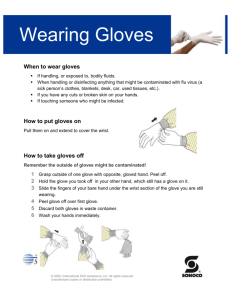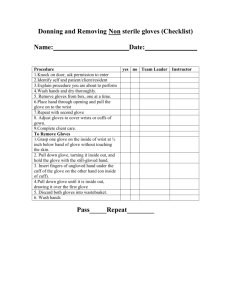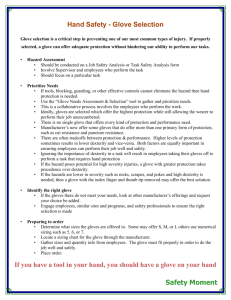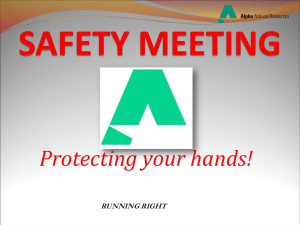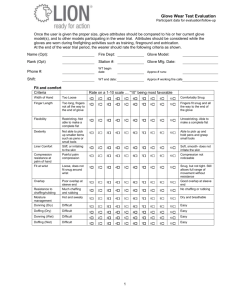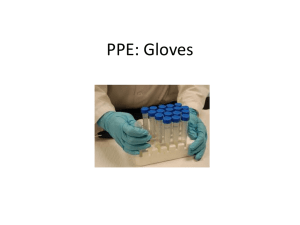Infection Control (Word) - Faith Community Nurse Network
advertisement
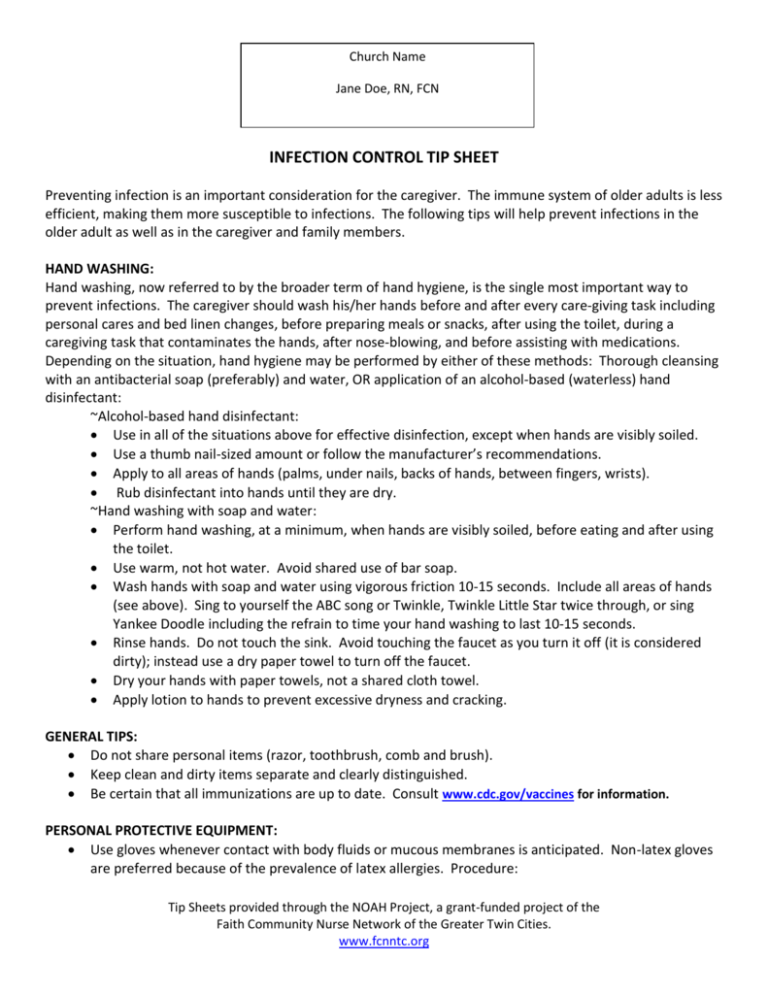
Church Name Jane Doe, RN, FCN INFECTION CONTROL TIP SHEET Preventing infection is an important consideration for the caregiver. The immune system of older adults is less efficient, making them more susceptible to infections. The following tips will help prevent infections in the older adult as well as in the caregiver and family members. HAND WASHING: Hand washing, now referred to by the broader term of hand hygiene, is the single most important way to prevent infections. The caregiver should wash his/her hands before and after every care-giving task including personal cares and bed linen changes, before preparing meals or snacks, after using the toilet, during a caregiving task that contaminates the hands, after nose-blowing, and before assisting with medications. Depending on the situation, hand hygiene may be performed by either of these methods: Thorough cleansing with an antibacterial soap (preferably) and water, OR application of an alcohol-based (waterless) hand disinfectant: ~Alcohol-based hand disinfectant: Use in all of the situations above for effective disinfection, except when hands are visibly soiled. Use a thumb nail-sized amount or follow the manufacturer’s recommendations. Apply to all areas of hands (palms, under nails, backs of hands, between fingers, wrists). Rub disinfectant into hands until they are dry. ~Hand washing with soap and water: Perform hand washing, at a minimum, when hands are visibly soiled, before eating and after using the toilet. Use warm, not hot water. Avoid shared use of bar soap. Wash hands with soap and water using vigorous friction 10-15 seconds. Include all areas of hands (see above). Sing to yourself the ABC song or Twinkle, Twinkle Little Star twice through, or sing Yankee Doodle including the refrain to time your hand washing to last 10-15 seconds. Rinse hands. Do not touch the sink. Avoid touching the faucet as you turn it off (it is considered dirty); instead use a dry paper towel to turn off the faucet. Dry your hands with paper towels, not a shared cloth towel. Apply lotion to hands to prevent excessive dryness and cracking. GENERAL TIPS: Do not share personal items (razor, toothbrush, comb and brush). Keep clean and dirty items separate and clearly distinguished. Be certain that all immunizations are up to date. Consult www.cdc.gov/vaccines for information. PERSONAL PROTECTIVE EQUIPMENT: Use gloves whenever contact with body fluids or mucous membranes is anticipated. Non-latex gloves are preferred because of the prevalence of latex allergies. Procedure: Tip Sheets provided through the NOAH Project, a grant-funded project of the Faith Community Nurse Network of the Greater Twin Cities. www.fcnntc.org o Wash hands before putting gloves on and after taking gloves off. o Change gloves if the glove develops a tear. o When removing gloves, hands should not touch the outside of glove: Removal of first glove: Pull glove off, touching the outside of glove, only. Hold this glove in the other (gloved) hand. Removal of second glove: Insert index finger of hand without glove under glove at the wrist of the other hand and pull glove off inside out over the glove you are holding. Discard both gloves. Gowns may be worn when contact with contaminated linens or other objects is anticipated. (Personal protective equipment is available at medical supply companies.) DISINFECTION OF CONTAMINATED SURFACES: Disinfect contaminated surfaces in the home with an antiseptic cleaning solution. If no commercial solution is available, freshly mixed household bleach and water in 1:10 proportions, is an effective disinfectant. (For example, ½ cup of bleach to 5 cups of water.) HANDLING SHARPS (Needles and blood glucose lancing devices): Sharps should be disposed of in a designated sharps container available from a medical supplier or by mail or in a laundry detergent (hard plastic) bottle with a screw-on lid. NOTE: While use of a laundry bottle is legal in Minnesota, it is discouraged because of the potential hazard it poses to sanitation workers. If a designated sharps container is used, it must be disposed of by an infectious waste disposal company. Laundry bottles may be disposed of by closing the lids tightly and placing them in the household waste. Visit the web site http://www.pca.state.mn.us/oea/hhw/sharps.cfm for safe options for disposal of sharps. INFECTION CONTROL DURING COLD AND INFLUENZA SEASON: Older adults have an increased risk for complications from influenza and account for more than 60% of influenza-related hospitalizations, so prevention is especially important . (Older adults with heart and/or lung disease have an even greater risk of complications.) Visit this web site for more information: http://www.cdc.gov/flu/about/disease/65over.htm. PREVENTION TIPS: Wash your hands frequently and thoroughly. Avoid touching your eyes, nose and mouth with unwashed hands. Always cover your coughs or sneezes, preferably by coughing or sneezing into your sleeve or elbow. Do not cough or sneeze into your hands. If using tissues, place them in the trash and immediately wash your hands. Keep alcohol-based hand sanitizers handy and use them often when soap and water are not available. Get an influenza vaccination every fall, unless your physician says it is contraindicated. Avoid contact with ill persons and, if you are taking drugs like prednisone or chemotherapeutic agents that affect the immune system, limit exposure to crowds and young children during influenza season. Practice healthy habits: Eat a balanced diet and plenty of fluids, manage your stress, and get exercise and sufficient sleep. If you are ill, stay at home until your fever is down to 100 degrees F for at least 24 hours without the use of fever-reducing medications. Tip Sheets provided through the NOAH Project, a grant-funded project of the Faith Community Nurse Network of the Greater Twin Cities. www.fcnntc.org
